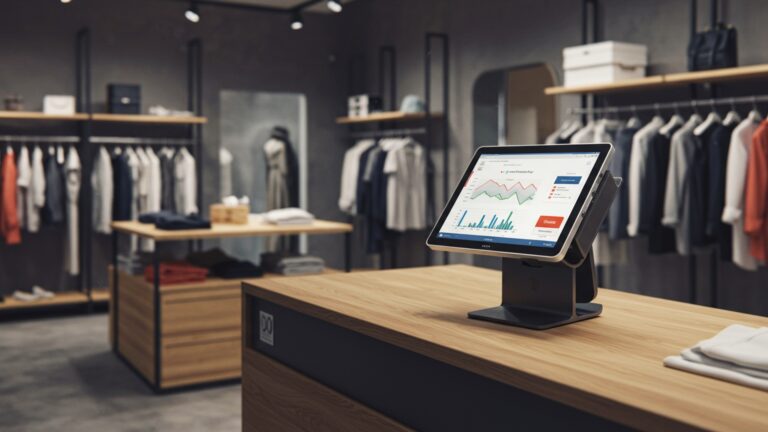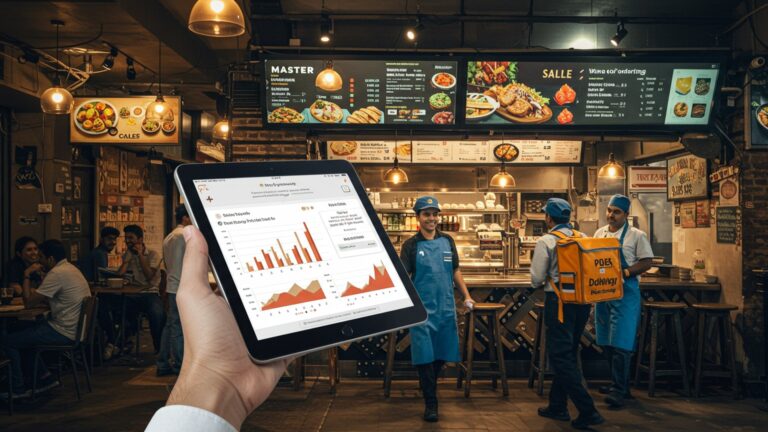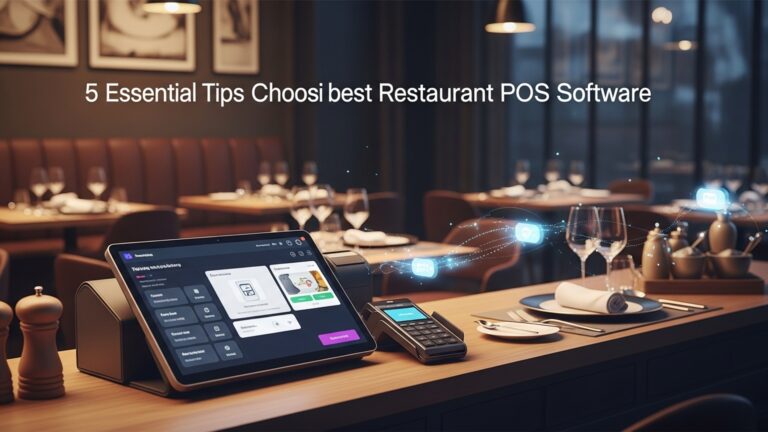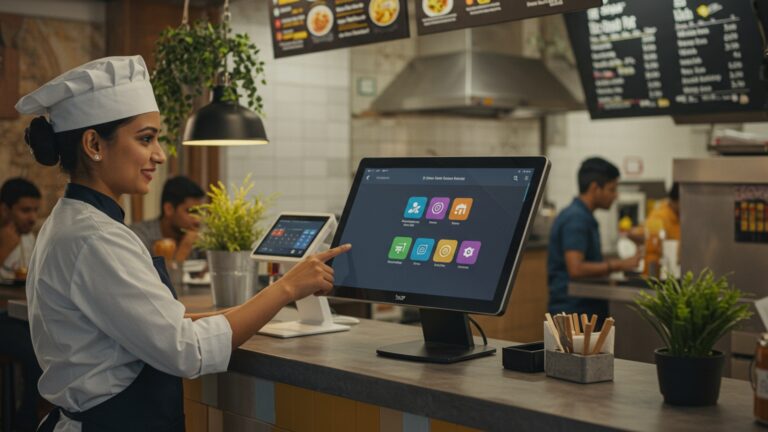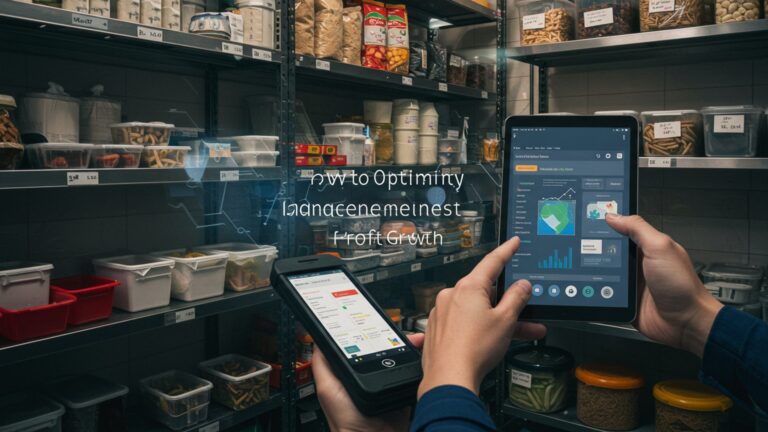Discover 7 Essential POS Software Features for Cloud Kitchens in India
The burgeoning cloud kitchen landscape in India, fueled by the relentless demand for diverse culinary experiences delivered via platforms like Swiggy and Zomato, has fundamentally reshaped restaurant operations. Operators, often managing multiple virtual brands from a single ghost kitchen, face an intricate web of challenges, from real-time inventory synchronization across varied menus to consolidating orders from a constantly expanding network of delivery aggregators. A robust POS software for cloud kitchens in India is no longer a luxury but the central nervous system, transforming fragmented data into cohesive operational insights. Essential features streamline order flow, optimize kitchen display systems. provide granular analytics, empowering businesses to forecast demand accurately and drive profitability in this hyper-competitive, digital-first environment.
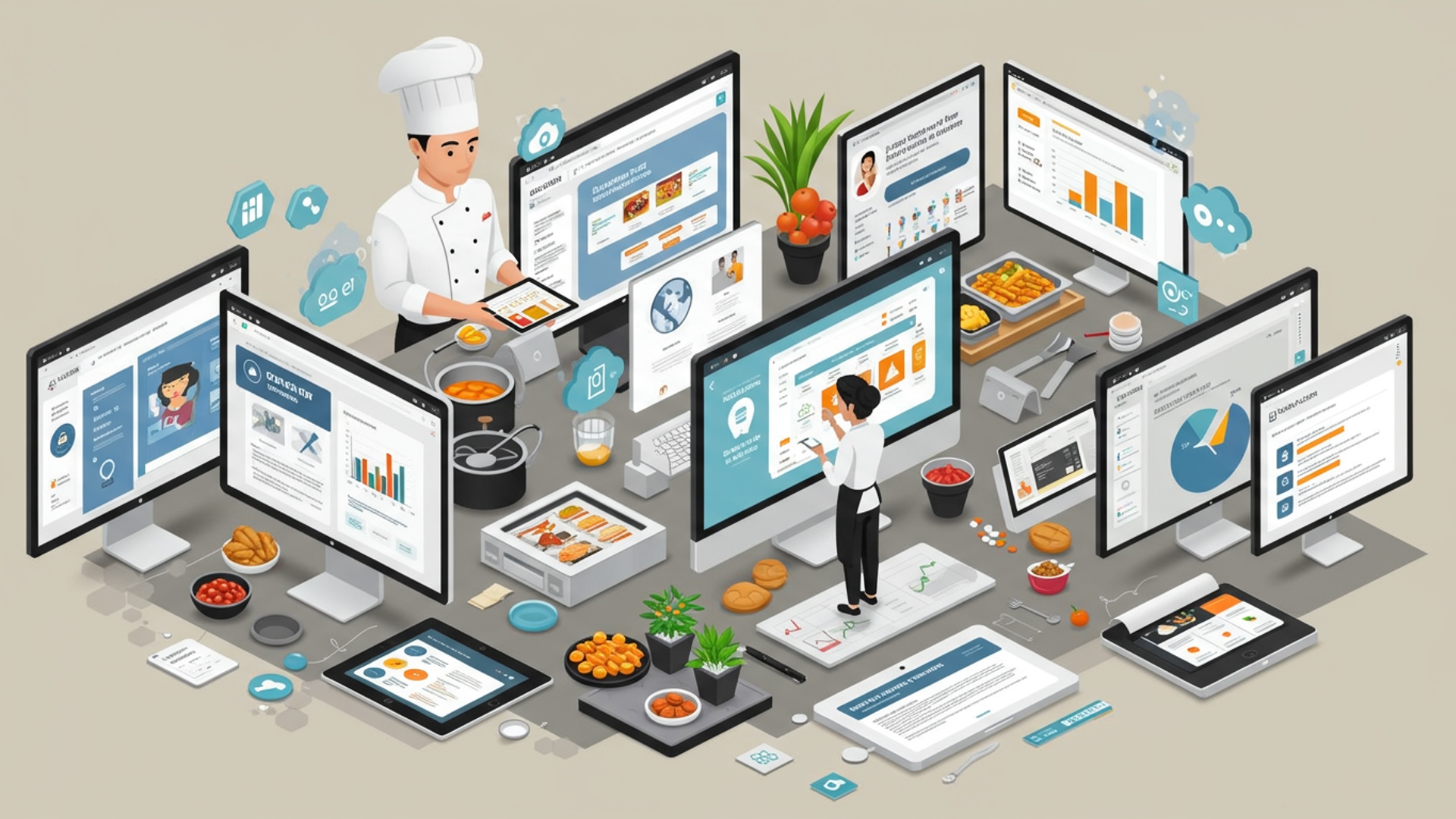
Understanding Cloud Kitchens and POS Systems in India
In India’s vibrant food service landscape, a significant revolution has been quietly taking place: the rise of cloud kitchens. Also known as ghost kitchens, dark kitchens, or virtual restaurants, these establishments operate without a traditional dine-in area. Their entire business model revolves around online orders, delivery. sometimes, takeout. This setup drastically reduces overheads like front-of-house staff, expensive real estate in prime locations. elaborate decor, allowing entrepreneurs to focus purely on food quality and delivery efficiency.
But, running a cloud kitchen, despite its lean operational model, is far from simple. It requires seamless coordination across multiple online platforms, precise inventory control, efficient order processing. insightful data analysis. This is where a robust Point of Sale (POS) system becomes not just an advantage. an absolute necessity. A POS system for cloud kitchens India acts as the central nervous system, integrating various aspects of the business into a single, manageable platform. It’s the digital backbone that enables these kitchens to thrive in a highly competitive and fast-paced market.
1. Multi-Channel Order Management
One of the defining characteristics of cloud kitchens is their reliance on multiple sales channels. Unlike a traditional restaurant with a single physical counter, a cloud kitchen receives orders from various sources:
- Major food aggregators like Zomato and Swiggy.
- Its own branded website or mobile app.
- Direct phone calls or WhatsApp orders.
Managing these disparate streams manually is a recipe for chaos, leading to missed orders, delayed deliveries. frustrated customers. An essential POS software for cloud kitchens India integrates all these channels into one unified dashboard. When an order comes in from Swiggy, for instance, it’s automatically pushed to the POS, alongside an order from your brand’s app. This eliminates the need for staff to juggle multiple tablets or constantly switch between different interfaces.
Consider a scenario where a cloud kitchen in Delhi, handling three different brands from a single facility, receives a rush of orders during peak dinner hours. Without integrated order management, staff would be frantically checking three Zomato tablets, three Swiggy tablets. their own website portal. A unified POS system funnels all these orders into one screen, prioritizes them. sends them directly to the kitchen display system (KDS), ensuring no order is lost and preparation begins promptly. This streamlined process dramatically improves order accuracy and delivery times, directly impacting customer satisfaction and repeat business.
2. Intelligent Inventory Management
Food costs are a major expense for any food business. for cloud kitchens, precise inventory management is critical to profitability. Wastage, over-ordering, or stockouts can severely impact margins. A top-tier POS software for cloud kitchens India offers intelligent inventory features that go beyond simple stock tracking.
- Real-time Tracking
- Recipe Management
- Supplier Management
- Wastage Tracking
It updates ingredient stock levels instantly as dishes are prepared and orders are fulfilled. If a “Chicken Biryani” uses 200g of chicken, the system deducts that amount from your inventory as soon as the order is marked as cooked.
You can input detailed recipes, including ingredient quantities. This allows the system to accurately deduct components for each dish sold.
Keep track of your suppliers, their pricing. lead times. Some advanced systems can even automate reorder alerts when stock falls below a predefined threshold.
Log any spoiled or wasted ingredients, providing insights into areas where operational improvements are needed.
For example, a cloud kitchen specializing in gourmet pizzas might find that they frequently run out of a specific imported cheese. With a POS system’s inventory insights, they can identify this trend, adjust their reorder points. even negotiate better bulk deals with suppliers. This level of control reduces food waste, prevents stockouts that lead to lost sales. ensures consistent ingredient availability, directly impacting the quality and consistency of the food offered.
3. Dynamic Menu Management
Cloud kitchens often need to be agile with their menus – adding seasonal specials, removing out-of-stock items, or updating prices across multiple platforms. Doing this manually for each aggregator and your own platform is time-consuming and prone to errors. An essential POS software for cloud kitchens India simplifies this complexity with dynamic menu management.
- Centralized Menu Updates
- Item Availability Toggle
- Scheduled Menu Changes
Change an item’s price or description once in the POS. it can be pushed to all integrated online channels (Zomato, Swiggy, your website) simultaneously.
Instantly mark an item as “out of stock” if an ingredient runs out, preventing customers from ordering something you can’t deliver. Once restocked, it can be marked “available” just as quickly.
Plan future menu updates, promotions, or seasonal offerings in advance. have them go live automatically at a specified date and time.
Imagine a cloud kitchen launching a new “Summer Cooler” menu. Instead of manually updating prices and descriptions across five different platforms, which could take hours and introduce inconsistencies, the manager uses the POS system. A few clicks. the new menu items, their pricing. availability are updated everywhere. This efficiency allows cloud kitchens to be more responsive to market trends and customer demand, offering fresh and exciting options without operational headaches.
4. Robust Reporting and Analytics
Data is the new currency. for cloud kitchens, understanding operational data is paramount to making informed business decisions. A powerful POS software for cloud kitchens India provides comprehensive reporting and analytics capabilities that offer deep insights into performance.
- Sales Reports
- Item Performance
- Customer Data
- Delivery Channel Performance
- Wastage and Inventory Reports
Track daily, weekly. monthly sales trends, identifying peak hours, popular dishes. slow periods.
See which dishes are top sellers and which are underperforming, helping to optimize your menu.
assess repeat customer rates, average order value. preferred items.
Compare sales volume and profitability across different aggregators and your own direct channels.
Gain insights into ingredient usage and areas of potential loss.
For instance, a cloud kitchen operator in Bangalore might notice through their POS reports that a particular vegan dish consistently sells well on weekends but not during weekdays. They can then use this insight to create targeted promotions or adjust ingredient ordering for that dish. Moreover, by comparing the sales from Swiggy versus their direct website, they might discover that their own platform, despite lower volume, yields higher profit margins due to reduced commission fees. This actionable data empowers them to strategize marketing efforts and optimize their channel mix for maximum profitability.
5. Seamless Third-Party Integrations
The operational ecosystem of a cloud kitchen extends beyond just order taking and inventory. It involves payments, delivery logistics, accounting. more. A truly effective POS software for cloud kitchens India must offer seamless integrations with other critical platforms and services.
- Food Aggregators
- Payment Gateways
- Delivery Partners
- Accounting Software
- CRM Systems
As discussed, direct integration with Zomato, Swiggy. others is non-negotiable.
Connect with popular payment processors (e. g. , Razorpay, PayU) to handle online payments securely and efficiently.
For kitchens using third-party logistics beyond aggregators (e. g. , Dunzo, Shadowfax for specific deliveries), integration can streamline dispatch and tracking.
Export sales data directly to accounting platforms like Tally or QuickBooks, simplifying bookkeeping and tax compliance.
Some POS systems offer basic CRM functionalities. for advanced needs, integration with dedicated CRM tools can be beneficial.
Consider a cloud kitchen aiming for efficient cash flow and simplified tax filing. With a POS system that integrates with their chosen accounting software, all sales data, including taxes collected and discounts applied, is automatically synced. This eliminates manual data entry, reduces errors. saves countless hours during month-end reconciliation, allowing the kitchen owner to focus on culinary excellence rather than administrative burdens.
6. Customer Relationship Management (CRM) Features
In a world where direct interaction is limited, maintaining a strong relationship with customers is crucial for cloud kitchens to build loyalty and encourage repeat orders. While aggregators own much of the customer data, a smart POS software for cloud kitchens India can help you build your own customer insights for direct orders.
- Customer Database
- Loyalty Programs
- Feedback Management
- Targeted Marketing
Automatically capture customer details (name, contact, order history) for direct orders placed via your website or app.
Implement and manage loyalty points, discount codes, or special offers for repeat customers. For example, “Every 5th order gets 10% off.”
Some POS systems allow for direct customer feedback capture post-order, offering a channel to address concerns or gather suggestions.
Use purchase history to segment customers and send personalized promotions (e. g. , “We miss you! Here’s 15% off your next order”).
A cloud kitchen in Pune, striving to build a loyal customer base, uses its POS system’s CRM module. They track customers who order directly from their website. After a customer places their fifth order, the system automatically sends a personalized SMS with a discount code for their next purchase. This simple yet effective strategy, powered by the POS, significantly boosts customer retention and fosters a sense of appreciation, distinguishing the brand in a crowded market.
7. Kitchen Display System (KDS) Integration
The heart of any cloud kitchen is its cooking area. efficiency here is paramount. A Kitchen Display System (KDS) replaces traditional paper order tickets with digital screens. seamless integration with the POS system is a game-changer for workflow optimization.
- Real-time Order Display
- Order Status Tracking
- Recipe & Instruction Display
- Performance Analytics
Orders from all channels immediately appear on the KDS screens in the kitchen, prioritized by preparation time or delivery schedule.
Kitchen staff can tap to mark items as “preparing,” “cooked,” or “ready for dispatch,” providing real-time updates to the dispatch team and even the customer (if integrated with a tracking system).
For complex dishes, the KDS can display recipe notes or special instructions directly to the chef, reducing errors.
assess prep times for different dishes, identifying bottlenecks and areas for staff training or process improvement.
Imagine a busy cloud kitchen in Mumbai during lunch rush. Without a KDS, paper tickets pile up, leading to confusion, lost orders. delayed service. With a KDS integrated with their POS software for cloud kitchens India, orders flow smoothly. The KDS color-codes orders based on waiting time, alerts chefs to new orders with an audible chime. allows the dispatch team to see exactly which orders are ready. This digital workflow minimizes errors, optimizes kitchen efficiency. ensures hot food is delivered promptly, enhancing both operational fluidity and customer satisfaction.
Conclusion
Embracing the right cloud-based POS software isn’t merely an upgrade for your cloud kitchen; it’s a strategic imperative for thriving in India’s competitive food delivery landscape. By leveraging features like integrated order management, real-time inventory tracking. insightful sales analytics, you transform daily operations from chaotic to seamless. My personal tip? Prioritise a system that offers robust integration with popular food aggregators like Swiggy and Zomato; this is non-negotiable for streamlining order flows and preventing costly manual errors, which I’ve seen cripple growth for many promising ventures. Having witnessed numerous cloud kitchens scale efficiently, I can attest that a well-chosen POS provides the data-driven clarity needed to adapt to evolving customer preferences and market trends. It’s about empowering your culinary vision with operational excellence, ensuring your delicious creations reach every customer without a hitch. Take this actionable step today to future-proof your business and truly unleash its full potential. For deeper insights into leveraging your POS, explore essential POS software tips for India cloud kitchen success.
More Articles
6 Key Benefits of Restaurant Billing Software for India Businesses
Discover 5 Best POS Systems for Your India Restaurant Guide
7 Essential Benefits of Restaurant POS Software for Indian Eateries
How to Master Inventory Management with POS in India 5 Tips
A Complete Guide How to Select the Best POS Billing Software for Business
FAQs
Why is integrating with food aggregators so vital for a cloud kitchen POS?
It’s super critical because it centralizes all your orders from platforms like Swiggy and Zomato into one system. This means no more juggling multiple tablets, fewer manual errors. a much smoother flow for all your incoming orders.
How does POS software help manage inventory in a cloud kitchen?
A good POS tracks all your ingredients in real-time. It helps you monitor stock levels, get alerts when supplies are low, manage waste. even calculate the cost of dishes, which is key for keeping your kitchen profitable.
What’s a KDS and why do cloud kitchens need it?
KDS stands for Kitchen Display System. It’s a digital screen in your kitchen that shows incoming orders, their status. preparation times. It replaces paper tickets, reduces errors, speeds up cooking. helps your kitchen staff work much more efficiently.
Can POS software really help me comprehend my cloud kitchen’s performance better?
Absolutely! It provides detailed reports on sales, popular items, peak order times. even staff performance. These insights are incredibly valuable for making smart business decisions, optimizing your menu. planning effective promotions.
Is it easy to update menus across different delivery platforms with this kind of POS?
Yes, a key feature is centralized menu management. You can update prices, add new dishes, or mark items as unavailable in one place. it automatically syncs across all your integrated delivery platforms. This saves a ton of time and effort.
How does POS help with standardizing recipes and controlling costs?
Many advanced POS systems let you store and manage your recipes digitally, including precise ingredient quantities. This ensures consistency in every dish. It also helps calculate the exact cost of each item, making it easier to set profitable prices and keep your food costs in check.
As my cloud kitchen grows, will this POS system still be useful?
Definitely. Essential POS features are designed for scalability. As you add more brands, kitchens, or increase order volume, the system can handle it, providing consistent performance and helping you manage your expanding operations efficiently without skipping a beat.

